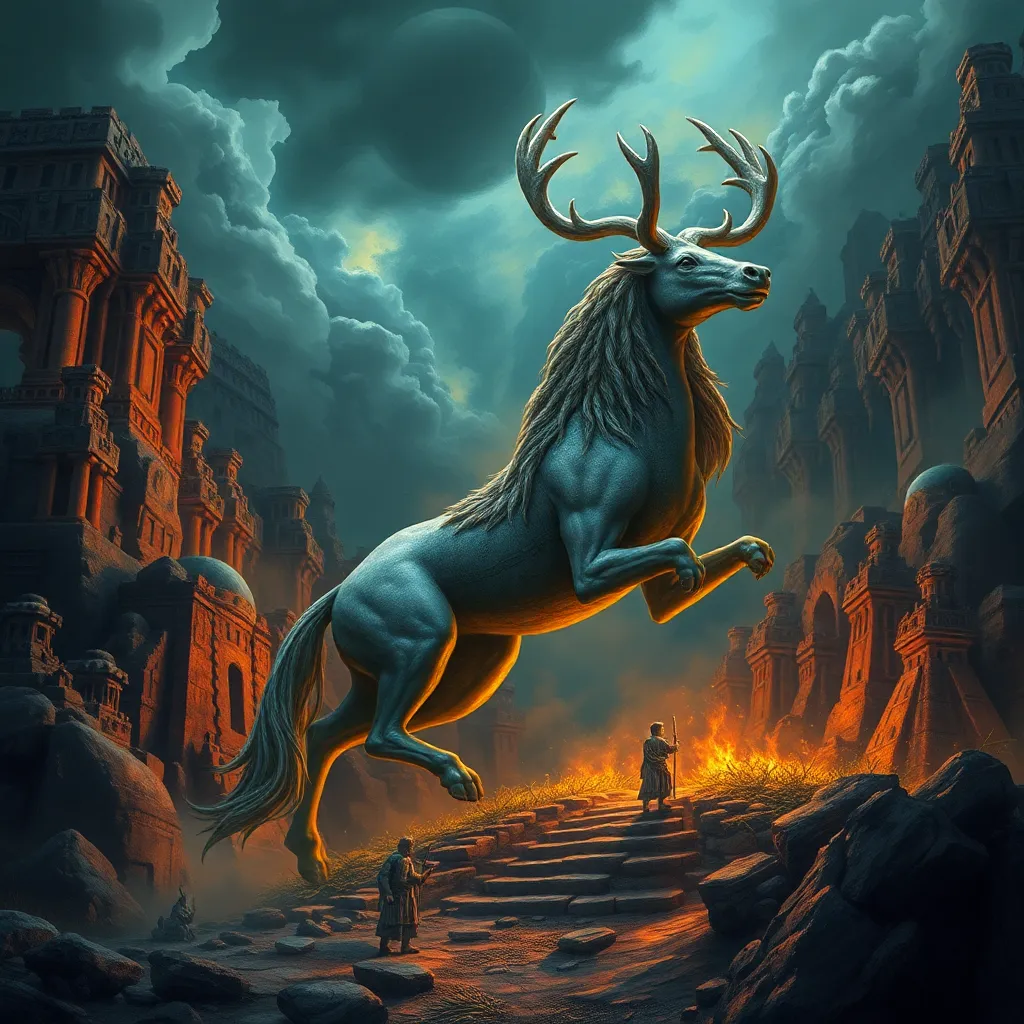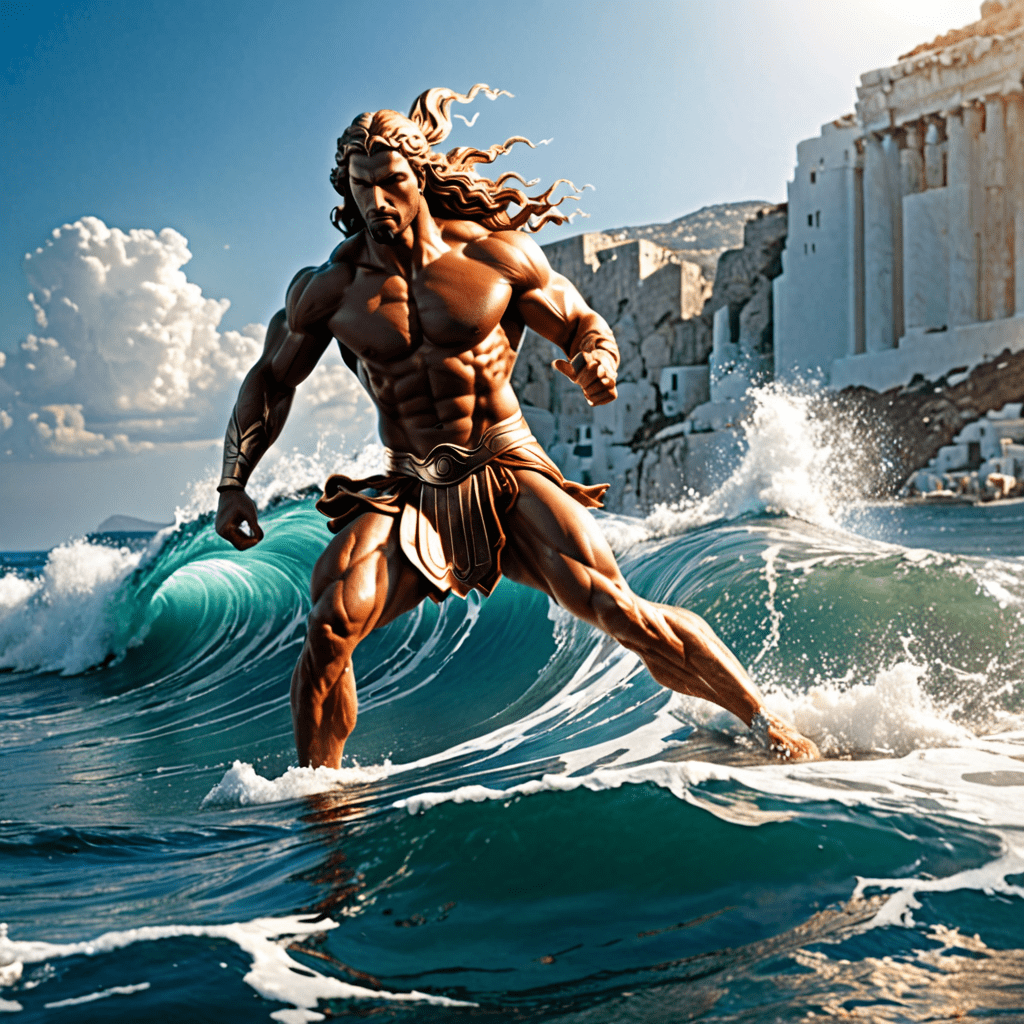Sleipnir Tales: The Mayan Creation Myth: Popol Vuh
I. Introduction to the Popol Vuh
The Popol Vuh is a sacred text of the K’iche’ Maya, serving as a cornerstone of Mayan mythology. This narrative not only recounts the creation of the world but also delves deeply into the origins of humanity and the adventures of the Hero Twins. It is a pivotal work for understanding the spiritual beliefs, cultural practices, and societal values of the Mayan civilization.
As a written account that emerged in the aftermath of Spanish colonization, the Popol Vuh holds immense significance in revealing the resilience of indigenous cultures and their narratives. Through this text, we gain insight into how the K’iche’ people viewed their existence and their relationship with the divine.
II. Historical Context of the Popol Vuh
The origins of the Popol Vuh can be traced back to the oral traditions of the K’iche’ people, who inhabited the highland regions of Guatemala. The text was eventually transcribed in the 16th century by an unknown author, likely a member of the K’iche’ elite, who sought to preserve their culture in the face of colonial oppression.
The K’iche’ civilization was one of the most prominent among the Maya, known for their advanced knowledge in astronomy, agriculture, and architecture. However, the arrival of Spanish conquerors led to significant disruptions, and many traditional stories faced the risk of being lost. The transcription of the Popol Vuh was a crucial effort to document and safeguard these narratives for future generations.
III. Structure and Content of the Popol Vuh
The narrative structure of the Popol Vuh can be divided into several distinct parts:
- The creation of the world and the cosmos
- The attempts to create humanity
- The adventures of the Hero Twins, Hunahpú and Xbalanqué
Key themes throughout the text include:
- The relationship between gods and humanity
- The duality of life and death
- The importance of sacrifice and renewal
The oral tradition plays a critical role in the storytelling process of the Popol Vuh, as it was initially passed down through generations before being committed to writing. This oral history contributes to the richness and depth of the narrative, allowing for variations and adaptations that reflect the culture’s evolving nature.
IV. Creation of the World in Popol Vuh
The Popol Vuh begins with a description of the initial state of the universe—void and silent. In this primordial darkness, the Heart of Sky, known as Tepeu, and the Feathered Serpent, Kukulkan, convene with other deities to bring forth creation.
The creation of the Earth is marked by the emergence of mountains, rivers, and forests, symbolizing the harmony and balance in the natural world. This process illustrates the Mayan cosmological belief that humanity is intricately connected to nature and the divine.
V. The Creation of Humanity
The creation of humanity in the Popol Vuh is a profound and iterative process, marked by three distinct attempts:
- The creation of humans from mud: This first attempt resulted in fragile beings who could not stand or speak, ultimately crumbling away.
- The creation of humans from wood: The second attempt produced wooden figures who lacked souls and emotions. They were devoid of reverence for the gods and were subsequently destroyed.
- The creation of humans from corn: The successful creation of humanity came with the formulation of beings from maize dough, which holds immense significance in Mayan culture as a staple food, symbolizing life and sustenance.
This narrative reflects the deep-rooted connection the Maya have with maize, signifying not only physical nourishment but also spiritual sustenance. The lessons learned from the failed attempts highlight the importance of respect and reverence for the divine.
VI. The Hero Twins: Hunahpú and Xbalanqué
Hunahpú and Xbalanqué, the Hero Twins, are central figures in the Popol Vuh. Their adventures against the Lords of Xibalba, the underworld, embody themes of duality, sacrifice, and resurrection. The twins face numerous trials, including:
- Playing a ball game against the lords of Xibalba
- Overcoming death and deception through cunning and bravery
- Resurrecting after being slain, showcasing the cycle of life and rebirth
Their journey emphasizes the resilience of the human spirit and the belief in the transformative power of sacrifice. The Hero Twins embody the duality of existence, representing both light and darkness, life and death.
VII. Cultural and Spiritual Significance of the Popol Vuh
The Popol Vuh continues to influence contemporary Mayan identity, serving as a source of pride and cultural heritage. It resonates with modern Mayans as they navigate their identities within a post-colonial context.
Some lessons and moral teachings derived from the myth include:
- The importance of community and cooperation
- The necessity of respecting nature and the divine
- The value of resilience in the face of adversity
Additionally, the Popol Vuh plays a role in modern spiritual practices, as many Mayans draw upon its teachings to inform their beliefs and rituals, connecting the past with the present.
VIII. Conclusion: Legacy of the Popol Vuh
The enduring impact of the Popol Vuh on literature and culture cannot be overstated. It stands as a testament to the richness of Mayan mythology and the resilience of indigenous narratives. As we reflect on the significance of the Popol Vuh, it becomes clear that preserving such narratives is vital for understanding diverse cultures and their histories.
In a world increasingly dominated by globalization, the call to explore and appreciate the richness of Mayan mythology is more important than ever. The Popol Vuh invites us to delve into the profound wisdom of the ancients, encouraging us to honor the stories that shape our identities and inform our understanding of the world.



